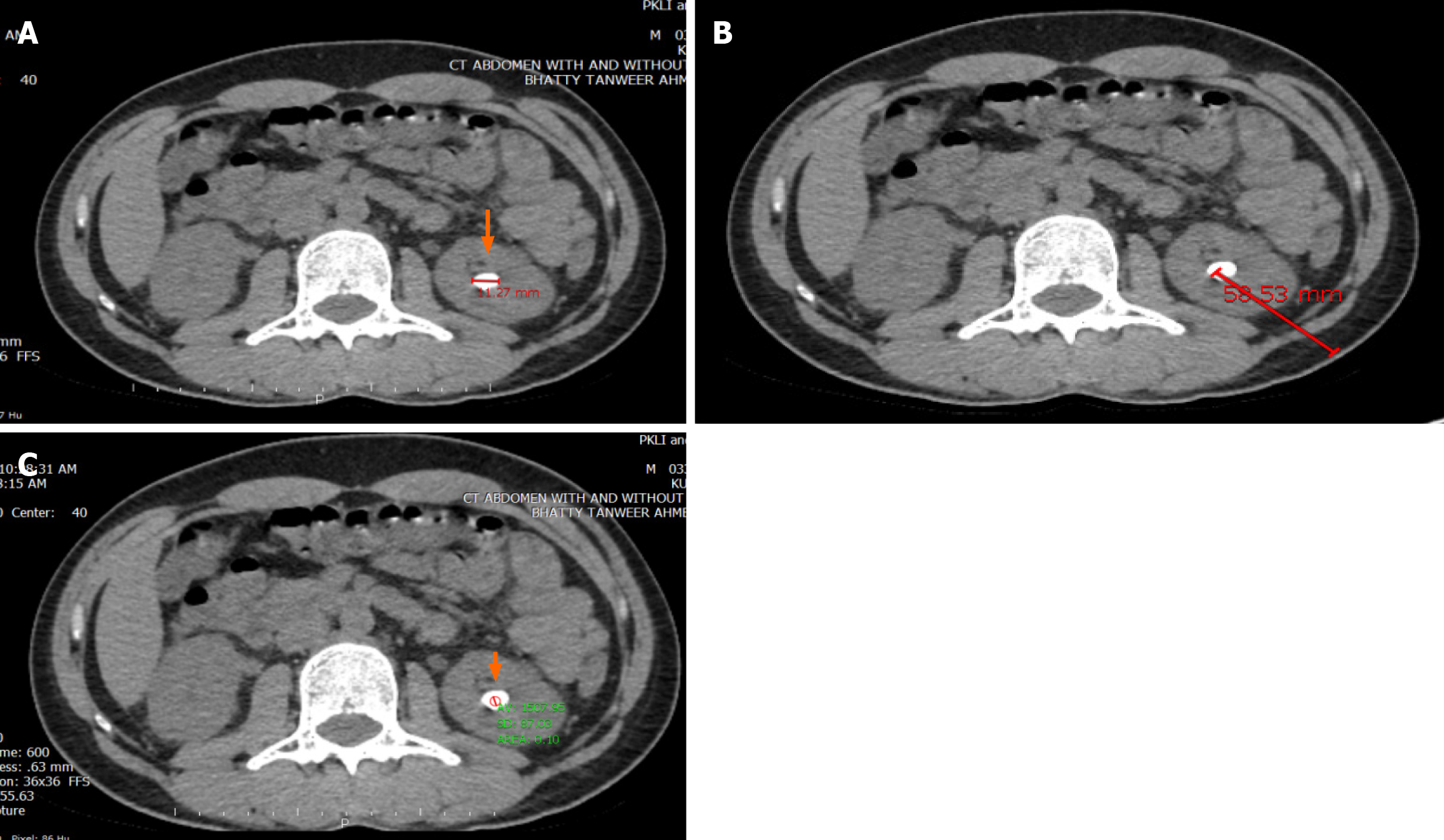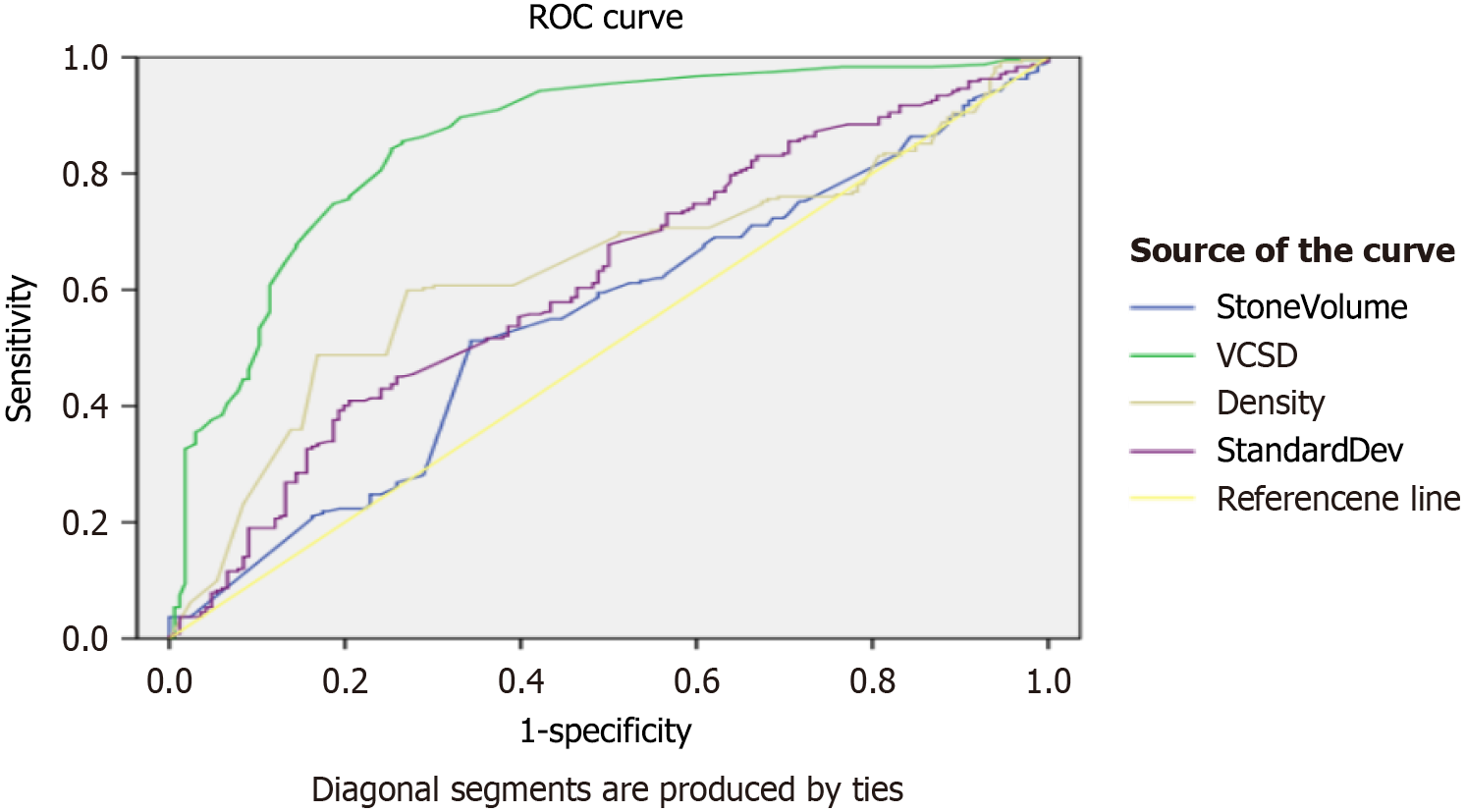Copyright
©The Author(s) 2025.
World J Nephrol. Mar 25, 2025; 14(1): 96946
Published online Mar 25, 2025. doi: 10.5527/wjn.v14.i1.96946
Published online Mar 25, 2025. doi: 10.5527/wjn.v14.i1.96946
Figure 1 How stone volume, skin to stone distance, mean stone density, stone density standard deviation (stone heterogeneity index), and variation coefficient of stone density were calculated.
A: Stone volume was calculated based on measurements of breadth, length, and height and using the formula SV = π/6 × Antero-posterior × Transverse × Cranio-caudal diameters of the stone in mm), and the final volume is expressed in mm3; B: Skin to stone distance measured (58.53 mm in this example); C: Area of interest on the stone shows a mean stone density (MSD) of 1507.95 and stone density standard deviation (SDSD) of 37.03 (also called stone heterogeneity index). Variation coefficient of stone density was the variable of interest in the present study and computed by utilizing the formula [(SDSD)/(MSD)] ×100 (%).
Figure 2 Receiver operating characteristic curves of stone variables including stone volume, stone density, standard deviation of stone density, and variation coefficient of stone density in relation to shock wave lithotripsy success.
ROC: Receiver operating characteristic; VCSD: Variation coefficient of stone density.
- Citation: Iqbal N, Hasan A, Iqbal S, Noureen S, Akhter S. Role of variation coefficient of stone density in determining success of shock wave lithotripsy in urinary calculi. World J Nephrol 2025; 14(1): 96946
- URL: https://www.wjgnet.com/2220-6124/full/v14/i1/96946.htm
- DOI: https://dx.doi.org/10.5527/wjn.v14.i1.96946














